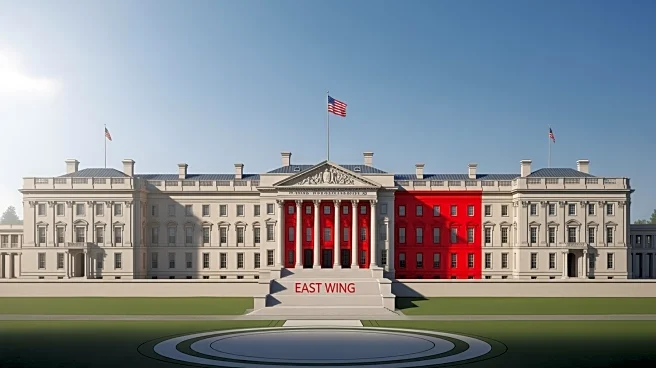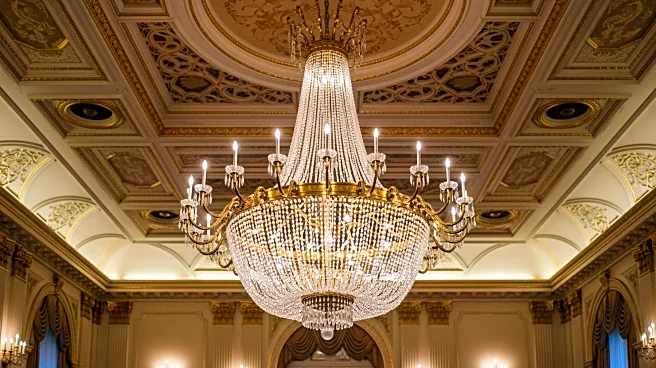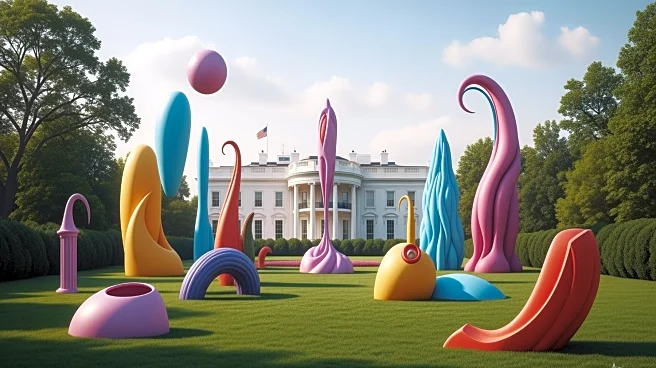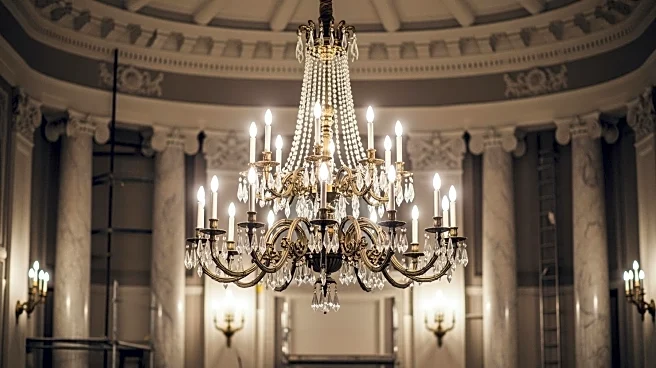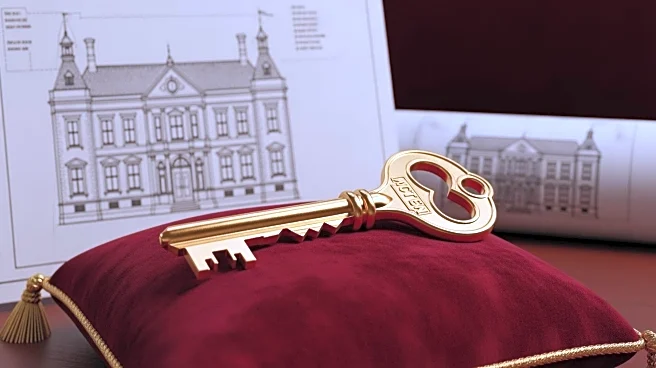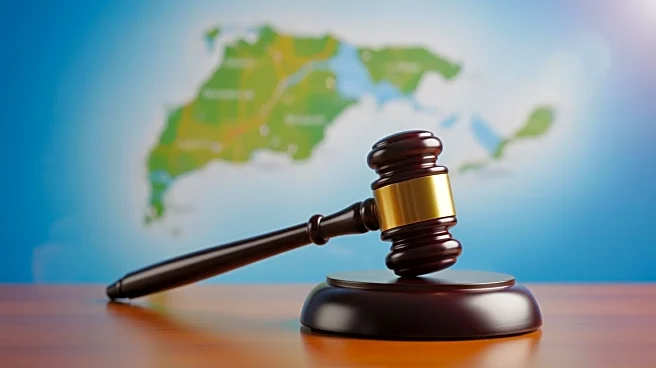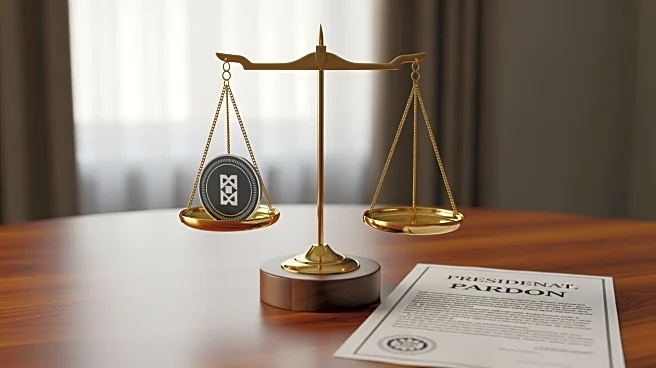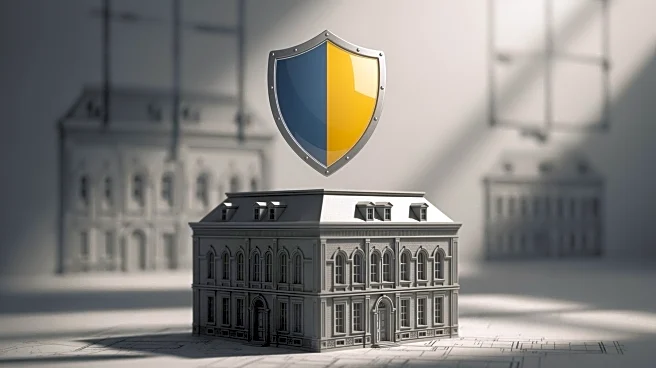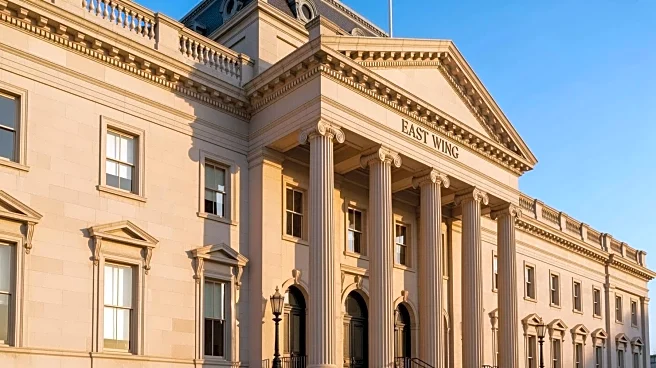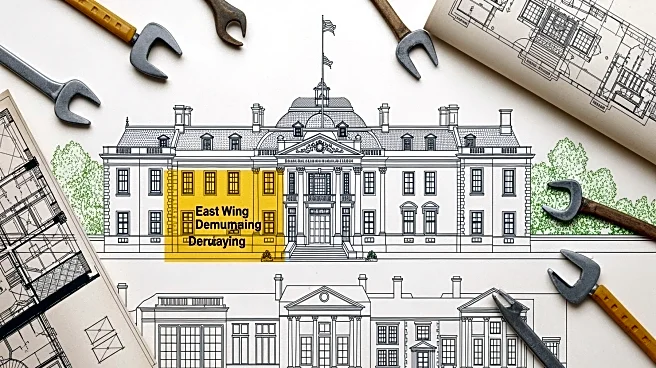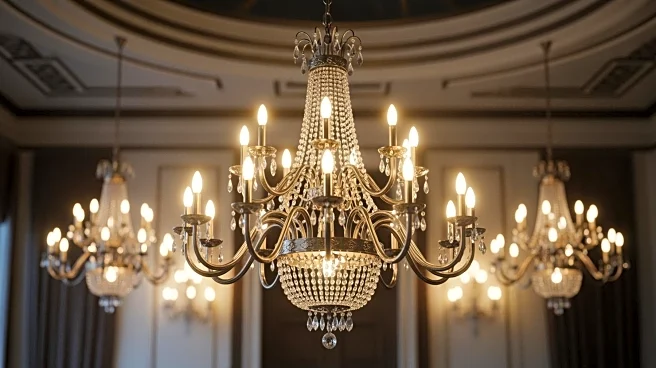What's Happening?
President Donald Trump's administration has demolished the historic East Wing of the White House to construct a new $300 million ballroom. The East Wing, which had housed the offices of the first ladies
since 1977, was dismantled in a matter of three days. This decision has drawn criticism from former first ladies and political figures, including Chelsea Clinton, who expressed her 'unsettled' feelings about the demolition. The move is seen as a reversal of earlier renovation plans and has sparked debates about the preservation of historical integrity versus modern renovations. The whereabouts of the East Wing's rubble remain undisclosed, with no public information on where the debris is being processed.
Why It's Important?
The demolition of the East Wing has significant implications for historical preservation and the legacy of the White House. Critics argue that the decision undermines the historical integrity of the presidential residence, which is a symbol of American heritage. The move has sparked debates about the balance between modernization and preservation of historical sites. It also raises questions about the authority of the president to make such changes unilaterally, potentially setting a precedent for future administrations. The decision may affect public perception of President Trump's respect for historical landmarks and could influence political discourse on preservation policies.
What's Next?
The demolition has prompted discussions among historians, preservationists, and political figures about the future of historical sites in the U.S. There may be calls for legislative action to protect such landmarks from unilateral decisions by future administrations. Additionally, the construction of the new ballroom could face scrutiny regarding its design and impact on the White House's historical architecture. Stakeholders, including former first ladies and preservation groups, may continue to voice their concerns and push for transparency regarding the handling of the East Wing's debris.
Beyond the Headlines
The decision to demolish the East Wing highlights broader cultural and ethical considerations regarding the preservation of historical sites. It raises questions about the value placed on historical memory versus modern functionality. The move could influence public attitudes towards historical preservation and prompt a reevaluation of policies governing changes to national landmarks. It also underscores the tension between presidential authority and the checks and balances intended to safeguard historical integrity.
